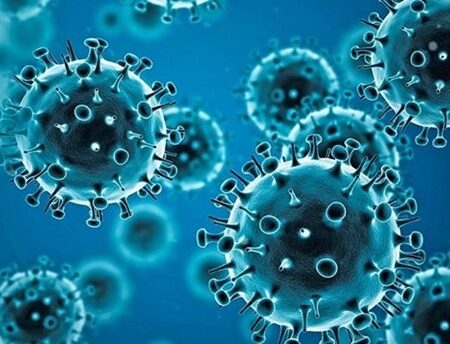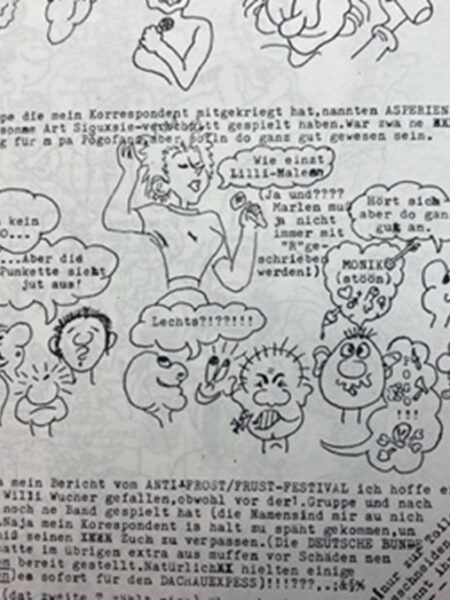The history of hygiene is a lengthy and complex discipline. The field doesn’t just require extensive study of a certain period’s products or practices, but it also dives into the anthropology of cleanliness. To many, the terms “clean” and “dirty” are self-explanatory and don’t require a closer look into their respective context. However, different cultures have thought of those words in vastly different ways throughout history. For example, modern western cultures tend to view the eastern practice of eating food with bare hands as unhygienic and, therefore, “dirty”; while eastern cultures find it “dirty” that European bathrooms often don’t come with a bidet, or that the practice of wearing face masks isn’t as common in the US as it is in Japan or China.
The concept of dirtiness has also commonly been used to create prejudices against marginalized communities. In fact, during the German epidemic of cholera and typhus of the 1880-s, local governments banned Jewish people from entering public pools instead of shutting the pools down altogether, because Jews were seen as primarily carriers of diseases due to their perceived “dirtiness.” This is a stigma that has been following the Jewish nation for centuries: Jews were often blamed for the spread of the Black Death in medieval Europe, causing a spark of documented violent attacks against Jewish communities in multiple European cities since 1348. In fact, these events later gave a name to the “poisoning the well” informal fallacy, as medieval Europeas believed that the bubonic plague was a result of Jewish people contaminating the local water resources.
Famously, Adolf Hitler’s “Mein Kampf” commonly addresses Jewish people as “vermins” that “spread bacteria.” Even practices as simple as washing hands aren’t immune, pun intended, from being used by propaganda.
It is worth saying that the stereotypes of “dirtiness” aren’t always directed at the oppressed. In fact, many counter colonization movements have weaponized cleanliness to prove that their nation is as good and valuable as their oppressor’s. This practice didn’t avoid the countries affected by Russian colonialism and Soviet occupation, and many Ukrainian newspapers have published articles about the perceived dirtiness that surrounded Soviet culture.
By the time that Russia has waged a full-scale war on Ukraine and more anti-Russian sentiments rose across the country, TikTok has already become a popular app for short-form content. With a new, more nationalistic ideology prevailing among Ukrainians, more TikTok accounts dedicated themselves to documenting the crimes of Russia against Ukraine and instances of Russia being unhygienic or barbarian, both modern and historical. Thus appeared the inspiration for this research paper, a viral video that shared the USSR’s questionable hygienic practices and deemed the whole Soviet period as dirty.
Due to a rather conservative culture, conversations about hygiene aren’t common in Ukraine. I found myself in a place where I realized that my mother had never told me about the menstrual products that she had to use in the Soviet Union, and when I tried to search for articles about the topic, I found close to nothing. Compared to the extensive papers written on feminine hygiene in the US, the number of similar content in Ukrainian was scarce – and this applies to other topics that concern hygiene, too. Apart from generally learning more about Soviet hygiene, I also wanted to study the relation between Soviet xenophobia and stereotypes on dirtiness, which reflected in the diversity of the people I interviewed and often affected the focus of our discussions.
- Hygiene in Propaganda: Media and Education
Previously mentioned articles and social media posts portray the Soviet Union as a state that doesn’t care about the well being of its residents overall. The implication that the USSR rejected toilet paper to avoid being culturally grouped with the West is supportive of the idea. This doesn’t ring as true when you look at the propaganda posters that addressed hygiene:

The propaganda did not just end at posters. Literature was also utilized to teach children about hygiene. In particular, Korney Chukovsky’s 1923 character called “Moydodyr” – an anthropomorphic sink – became quite popular during the mid to late Soviet era. Moydodyr literally translates as “Wash until there’s holes”, but a common English translation would be “Wash ‘Em Clean.” In the story, Moydodyr visits a boy who refuses to wash himself and ends up teaching him that taking care of oneself is important.
When it comes to education and hygiene, 4 of the 7 people who were interviewed for this paper mentioned having similar educational posters about hygiene in their schools. Three women aged 52-57 from: Zhytomyr region, Ukraine; Kharkiv, Ukraine; and Andijan, Uzbekistan, mentioned having separate sex education classes where nurses taught girls about the menstrual cycle. However, that was the only formal education on hygiene that they have received.
- Menstruation and Sexual Education in Schools
Elmira (alias), born in 1972 in Uzbekistan, mentioned that the invited nurse was rather dismissive and shy, and the other two women did not share any details about the contents of the classes. Elmira also addressed the fact that despite only having access to handmade menstrual products, neither her nor the women in her area faced any difficulties when it came to attending school or work during their periods. Due to her previous city of residence (Kherson) being occupied by the Russian forces in 2022, she now lives in the Czech Republic and experienced a cultural shock when she learned about period poverty there. The Czech Republic’s tax on menstrual products is one of the highest in Europe and the products themselves remain in the highest tax category of the country. Due to this, the young girls from the lower economical classes have to skip school during their periods – a type of discrimination that was previously unseen by Elmira, even in Soviet Uzbekistan.
- Facial Hair, Hygiene and Culture: the Anthropological Concept of Cleanliness
When asked about whether traditional Uzbek hygiene practices were looked down upon during the Soviet era, Elmira mentioned that she has never experienced racism or any other forms of xenophobia while living in Uzbekistan, despite her school putting people of up to 16 different nationalities in the same classes. However, she did say that beards became less and less popular as the Soviet occupation went on, even though having a beard is a requirement for men in Islam, and the majority of Uzbeks were Muslim prior to the Soviet rule. Older, more religious or rural people still grew their beards, and the national omen that “the longer the beard – the wiser the man” still existed in certain communities. But Elmira stated that the majority of men in her generation rejected beards and found them overall “uncool” or “lame.”
This approach is still relevant in modern-day Uzbekistan. “Mediazona,” a Central Asian news website, reported numerous forced bear shavings in Uzbekistan and Tajikistan in 2021. In particular, it provided an interview with a religious Uzben man from Andijan named Boburmirzo. He claimed to have been taken from the street by unnamed policemen, brought to a police station and forced to shave his beard under the claim that he needed a new passport photo without one. The passports would later be used against bearded men, too, as Uzbek authorities would require them to “match their passports photos” and shave their beards again had they grown them out.
Anti-religious Soviet propaganda greatly influenced this sudden decline in the popularity of beards, but it was nowhere close to the “Beard tax” that existed in the Russian Empire during Peter the Great’s reign – the Soviet disdain towards beards only showed in its culture and not in the Union’s law. Still, the line between Peter the Great’s so-called “Europeanization” of Russia and the Soviet approach to facial hair is pretty clear.
This narrative is supported by a Ukrainian woman named Oksana, born in 1965 in Ternopil, Ukraine. She reports that a clean shaven chin was a part of the “perfect Soviet citizen” image created by the USSR through visual propaganda like posters or films, and that having a beard was only permissible for the homeless or blue collar workers who didn’t have access to shaving products.
A Ukrainian man named Mykola, born in 1968 in Lviv, Ukraine, reports that despite beards being looked down upon in his city, mustaches were quite popular during his high school years, which urged him to grow one out, too. However, when he enrolled in the Soviet army in 1986 and served in Belarus and Russia, his higher-ups required all Ukrainians to shave their mustaches to prevent the spread of “Ukrainian bourgeois nationalism” through them. Mykola stated that Belarusians and Russians were allowed to keep their mustaches.
Mustaches were seen as a manifestation of the Ukrainian political will. They were heavily associated with Hetmans – highest cossack military commandments. All but one Hetmans had a mustache, with Kyrylo Rozumovsky being the exception, as he was assigned the role by queen Elisabeth of Russia and not elected by cossacks like other ones.
Taras Shevcheko, a famous Ukrainian writer and practically the symbol of Ukrainian culture and resistance, had a mustache, too. In a way, Shevchenko’s mustache became iconic to his overall image. So much so, that when a popular Ukrainian brand Orner developed a tabletop game about Ukraine called “Shevchenko asks,” they even included a printed out “Shevchhenko’s mustache” drawn by a Ukrainian illustrator Oleksandr Grekhov, who is known for reimagining Ukrainian classics by determining their visual brands.
Other examples of mustaches being an important part of Ukrainian culture can be found in folklore. As an old Galician saying goes, “Borscht without meat is just a soup, and a guy without a mustache is a tragedy!”
Like beards, the stigmatization of mustaches did not just start in the USSR. Oleksa Storozhenko, a XIX century Ukrainian writer, has a short comedic story called “Mustaches” that references the theme of mustaches being banned in governmental institutions. Vira Aheyeva, a modern Ukrainian writer and literary critic, explains the story’s premise in her book “The Backstage of the Empire”:
“Here, Storozhenko’s character clearly testifies that Russians and Ukrainians are guided by completely different ideas about political culture and, ultimately, the structure of society. The conflict between the characters moves into a personal plane. The formidable “chairman” accuses the narrator of violating the highest royal ban on wearing a mustache. For some reason, mustaches are forbidden in the civil service, so the character has to shave and then experiences deep frustration about it. At home, his new appearance causes a real culture shock. His wife and maid are crying, the neighbor is upset, and even the dogs did not recognize their owner and started barking. Losing a well-groomed mustache meant being humiliated, losing the previously held prestige and self-respect, and this change causes severe depression for the character. The victim of such arbitrariness finds salvation in his own national community. The neighbor, an unsurpassed lawyer who knew how to win any court case, found a royal decree that allowed mustaches to those who retired from military service. The nobleman prepared his revenge with all diligence: he did not appear in Poltava, his city of service, citing illness until he had grown even a slightly ostentatious mustache. And when the “president” came up to him again with a cry about violating the law, he proudly raised his head and shoves the decree in his hands. The subordinates experience their moment of triumph. However, in the final phrase of the story, there is a bitter understanding of the scale of the discrimination against Ukrainian traditions, as the main character won his case through loopholes in the law and not through respect to Ukrainian culture altogether.”
These examples might seem unrelated to the initial topic of research at first, but they portray the relation between the concepts of cleanness and the national affiliations of certain practices. The only reason that beards were considered improper in Soviet and Tsarist Russia was the connection between beards and Islam or Asia, and Peter the Great’s “Beard tax’ served primarily as a way to distance Russia from its eastern Muslim neighbors. Mustaches were only scrutinized due to their popularity in Western Ukraine and their prevalence in Ukrainian culture, which has nothing to do with hygiene itself.
Ahtem, an interviewed Crimean Tatar who was born in Uzbekistan in 1964, said that he did not face any discrimination in Central Asia either. His family was deported to Bulungur in 1944 during the deportation of Crimean Tatars, and they stayed there until 1979, when they tried to return to Crimea but failed due to discriminatory Soviet politics. As a result, they were forced to reside in Kuban, a region in the North Caucasus equally inhabited by ethnic Ukrainians and Russians. Ahtem reported experiencing racism from the local Russians, who called him and his family slurs that indicated dirtiness in some way. However, that is the only comment that he made on hygiene-based discrimination.
- The Soviet Banya – an Unsanitary Hell or a Misunderstood Practice?
All of the interviewed people mentioned banyas in one way or another. Modern banyas – traditional Eastern European saunas – mainly exist for relaxation purposes and are in no way a necessity. On the contrary, Soviet banyas were largely associated with hygiene and became a part of many people’s weekly routines. Banyas were communal for the most part, but some people installed banyas in their yards. Larysa, a Ukrainian woman born in Zhytomyr region, Ukraine, in 1970, said that her father built a banya in a separate building next to their house, and that her family attended it every Saturday. She also mentioned that their neighbors opted to asking them to use their banya instead of going to the communal one, and they agreed.
Most correspondents, however, have had little experience with communal banyas, as either their families moved to apartments with separate bathrooms early in their childhood, or they simply preferred other methods of bathing. Olena, Mykola and previously unmentioned correspondents named Viktoriia (born in Kharkiv, Ukraine in 1963) and Iryna (born in Kyiv, Ukraine in 1966) said that their families preferred bathing in detachable baths at home rather than going to banyas, though some of their relatives did attend banyas weekly. In particular, Mykola’s father installed a bath in their kitchen, as it was the biggest room in their apartment, but they would heat the water for the bath over the stove and fill it manually. Olena’s family filled the bath manually, too, and she mentioned it being a relaxation ritual, with different herbs added to the water. Other respondents were not old enough to remember life without running water at home, and said that banyas did not play a huge role in their hygiene.
- Scents and Beauty.
When it comes to popular scents, the female correspondents mentioned two perfumes: “Silver Lily of the Valley” and “Red Moscow.” All of them said that there was a small amount of Polish perfumes on the market, however, they were expensive and most people opted for Soviet perfumes. Olena said that in her teenage years, she dreamed of using the highly praised French perfumes, but when her father gifted her some, she recalled them being too strong for her taste. When it comes to domestic scents, “Silver Lily of the Valley” was described as a more floral and light scent. Its top notes include Bergamot, Pear and Peach; its middle notes are lily of the valley, jasmine and honeysuckle; and the base notes are oakmoss, plum and sandalwood. “Red Moscow” is described as a heavier, sweeter scent, with top notes such as coriander, orange blossom and bergamot; middle notes such as carnation (flower), ylang-ylang, jasmine and rose; and base notes like iris, vanilla and tonka beans. Hygiene products either weren’t scented or smelled “bad”, as Victoriia recalls regarding her childhood shampoo.
The women also had different memories regarding make-up. All of them said that lipstick was the main cosmetic product among Soviet women, and Victoriia even said that “when one goes out to throw out the trash, she should have her lipstick on.” However, Victoriia was the only respondent that implied the necessity of makeup in any way – other women said that makeup was optional, and Elmira said that she feels more pressure to wear makeup now than she did in the USSR. Other mentioned products include mascara, setting powder and foundation.
Conclusions
Despite being developed enough for the era, Soviet hygiene strongly resonates with traditional Russian notions of cleanliness and dirtiness. If anything, it is worth criticizing for the way it used hygiene as a means of propaganda. The diverse group of respondents all seem to agree that there were enough means for personal hygiene in their childhood, however, many of them note how the prevalence of Soviet day-to-day traditions destroyed the traditions of their respective countries.
Bibliography
- Ahieieva, Vira. За лаштунками імперії: Eсеї про українсько-російські культурні відносини. Kyïv: Віхола, 2021.
- Zahradnicek-Haas, Elizabeth. “Bleeding Injustice: Period Products Remain in the Highest Tax Category in Czechia.” Prague, Czech Republic, May 28, 2023. https://www.expats.cz/czech-news/article/bleeding-injustic-period-products-remain-in-the-highest-tax-cateogory-in-the-eu.
- Мaр’янa. “Художник Олександр Грехов: ‘Не Треба Консервувати Людей у Їхніх Епохах.’” Тиктор медіа, June 6, 2022. https://tyktor.media/portret/oleksandr-hrekhov/.
- “Набір Портретів ‘Гетьмани України’ (Артикул: 3-0602) • Купити.” Магазин Урок UA, July 6, 2024. https://shop.urok-ua.com/nabir-portretiv-getmany-ukrayiny-artykul-3-0602/.
- “Настільна Гра Про Україну ‘Шевченко Питає’ ✔️ Купити в Orner.” ✔️ Купити в ORNER. Accessed July 13, 2024. https://orner.com.ua/ua/product/nastolnaya-igra-ob-ukraine-shevchenko-sprashivaet-1686?utm_source=google&utm_medium=cpc&utm_campaign=pmaxgames&gad_source=1&gclid=CjwKCAjwy8i0BhAkEiwAdFaeGLW6A1E3fEgIYuyH1ep9WnxwmsHZMF2Y5ZdGRSWjvQn8hHdwbpl5DBoC7N8QAvD_BwE.
- “Не Берите в Рот Чужих Ложек: Советские Плакаты о Гигиене.” Sputnik Абхазия, April 17, 2020. https://sputnik-abkhazia.ru/20200416/1029918495.html.
- Тарас Шевченко – геній і пророк українського народу | Перещепинська міська територіальна громада, March 9, 2023. https://pereschepynske.otg.dp.gov.ua/novini-ta-podiyi/novini/taras-shevchenko-henii-i-prorok-ukrainskoho-narodu.
- “Чому в СРСР Були Проблеми з Гігієною: Розкрита Вражаюча Правда.” OBOZREVATEL NEWS, July 6, 2020. https://news.obozrevatel.com/ukr/lady/beauty/chomu-v-srsr-buli-problemi-z-gigienoyu-rozkrita-vrazhayucha-pravda.htm.
- “Шкідливі Гігієнічні Звички з СРСР, Людей Тих Часів Досі Переконані, Що Гігієна Раніше Була ‘Правильною’, а Сучасні Засоби, Небезпечні.” Ukr.Media, August 10, 2019. https://ukr.media/medicine/398695/.





